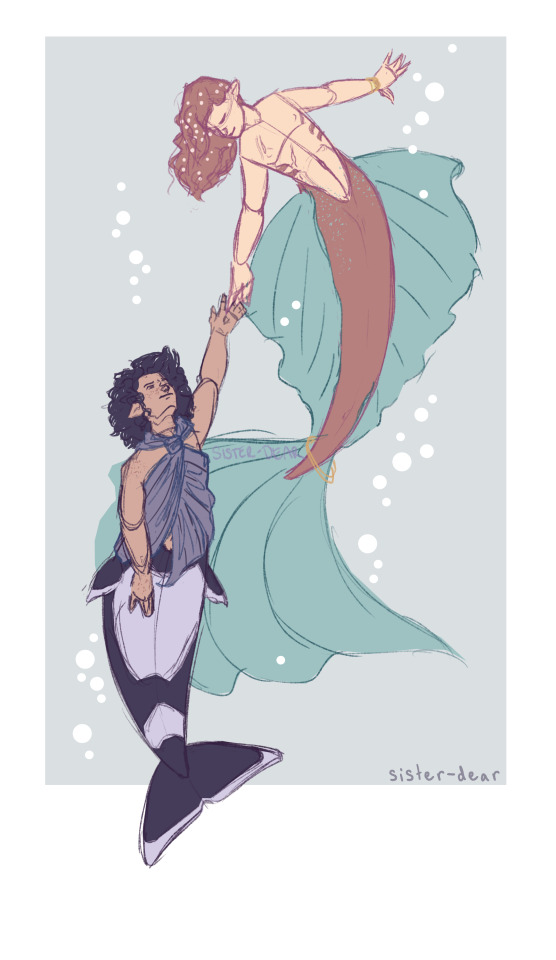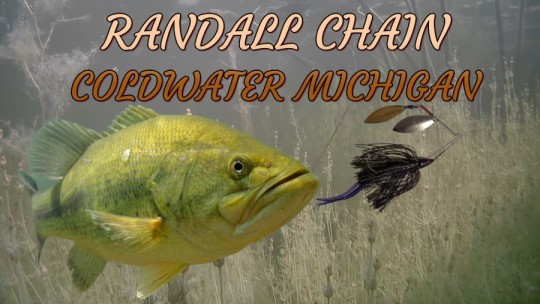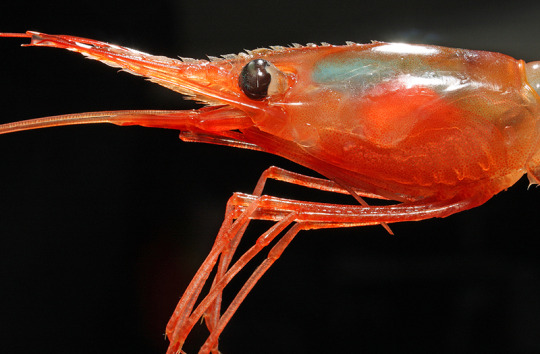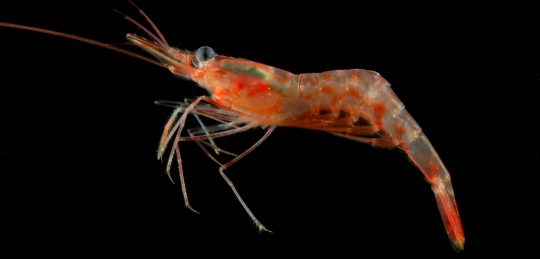#Coldwater fish
Explore tagged Tumblr posts
Text

TSRNOSS, p 616.
#mammalian embryology#thymine dimers#excision repair#coldwater fish#ultraviolet absorption by pyrimidines#thymine#nitrous acid#junk DNA#carbon monoxide#solubility#chromium picolinate#iodine#absorption of neutrons by water#evolution of placental mammals#vitamin A#immunity#oligotrophic environment#satyendra sunkavally#cursive handwriting#manuscript
0 notes
Text
Some other coldwater freshwater fishes appear irregularly in the pond and aquarium trade, beyond domesticated goldfish and koi varieties. Whilst many of these lack color, they may have bags of character, and interesting behaviors. One such fish is the miller's thumb or European sculpin, Cottus gobio. This fish normally grows only to 10 centimeters or 4 inches, and sometimes quite larger, to 18 centimeters,or a little over 7 inches. Even this is not huge, so they do not require raised indoor ponds or other massive aquariums. From the perspective of European aquarists, this is a true native fish, having a natural distribution over a swathe of Europe, including its presence on Great Britain.
Their habitat preference is for well oxygenated streams and rivers, with coarse beds featuring large stones. Although these sculpins are found in rapids, they have a preference for moderate flow. It is their behavioral selection for useful slack water refuges, and obstacles to uncomfortably high flow velocity, that enables their presence in faster flowing, upland headwaters. Younger fish prefer shallow, stony riffles, whereas the adults have broader habitat preferences, and can be found present in the wild around submerged wood and vegetation, in lakes and in slower flowing waters with softer bottoms.
Sculpins are a part of an important radiation of fishes known as cottoids, that also includes the lumpsuckers and greenlings, among some others. Traditionally the cottoids were regarded as a subclade of the scorpaeniform fishes, but the characteristics supporting that 'order' or 'suborder', were few and problematic, for example, their spiny cheeks. Cottoid fishes have turned out to be more closely related to the sticklebacks and eelpouts, than they are to the core scorpaeniforms, or the true scorpionfishes and their allies, which sculpins can certainly resemble.
Cottoids or sculpins are benthic fishes of marine to freshwaters, that lack a swim bladder, which is not unusual for fishes that live on the bottom, because it is a floatation device. C. gobio tolerates broader water requirements, than is often said to be the case. The pH of the waters they inhabit in the uplands is around neutral, but they can migrate down to lowland chalk streams, where the pH is 9, so these are fish of hard and base freshwaters. Although this species can be found in the low salinities of the eastern Baltic Sea, no elevation of specific gravity is necessary in the aquarium, and they are basically freshwater sculpins with a limited tolerance for low end brackish conditions.
Much is said online about the supposed demands of these sculpins for very cool water, and I have read the curious assertion that thejuveniles are more heat tolerant than the adults. Contrarywise, juvenile C. gobio are in fact less tolerant of higher temperatures, than are the adults of their species that have migrated away from riffles, and they become thermally stressed even below 20 degrees. The range of water temperatures at which mature C. gobio feed is as low as 5 degrees and also as high as 26 degrees centigrade.
C. gobio basically have a staple diet of arthropods. Older sources overstate the extent of their predation on fish eggs and fry, though with that said, they actually do consume such items opportunistically. Sculpins such as C. gobio are able to ingest large food items, and smaller ornamental fishes may end up as prey. C. gobio are territorial and aggressive among themselves, and prone to conflict with other bottom living fishes. Conflicts can be minimized by providing these fishes with a complex aquascape, in which lines of sight are easily broken. Stones, gravel, wood, and live water plants, are all appropriate for this species Sculpins are normally ignorant of dissimilar fishes with different patterns of spatial use.
0 notes
Note
what if…
link could use magic to temporarily make ravio a mer? ????????

Thank you so much for the ask!
If Ravio somehow became a mer, he would be very very excited to see Link's world and also very very nervous because there's all sorts of dangerous critters down here! (Link will keep him safe.)
Link would be absolutely ecstatic at getting to swim with Ravio properly. Once he figures out his fins, Ravio will be delighted to find that he's actually faster than Link!
#link's giant fins are pretty but they slow him down and are terrible in rough water#ravio's design is based off a Dall's Porpoise#i looked and looked for a purple coldwater fish before giving up lol#mermaid au#albw#ravio#link#mer
97 notes
·
View notes
Text

Wonder how cold the Rio Grande is in early February? 🤔
#New Mexico#Fly Fishing#trout#RioGrande#flyfishing#gonefishing#coldwater#nature#OptOutside#NewMexico#daytrip#Taos#weekendgetaway#roadtrip
25 notes
·
View notes
Note
the shul im trying to convert with has a "conversion checklist" of things you need to do to convert with them (amongst other things obviously) but i love it so much because the list goes from like "attend a 3 hour yom kippur service, enjoy it & dont fall asleep or else" all the way to "eat hamantaschen :3" i just adore that theyre equally as important
oh fuck yeah nonnie
my rabbi literally told me to rewatch fiddler on the roof LMFAO
#my asks#fishfingersandscarves#anonymous#im so excited for purim#cha fish is gonna dress up like quentin coldwater
42 notes
·
View notes
Text

1 note
·
View note
Text
Randall Chain Bass Fishing
https://rumble.com/v40zx7g-michigan-bass-fishing-in-the-fall.html?mref=66lt3&mc=9e0fe

#bass fishing#fishing videos#fishing#bass#michigan#michigan bass fishing#video#randall chain#coldwater
0 notes
Text
easily one of the stupidest features of living in this world that smoking is so bad for you but also looks so uniquely cool. theres really no replacement for it, visually. some of us need to look fucked up in a european way. some of us feel an instinctual need to look like john constantine for some reason. some of us need to be staring off the edge of a coldwater fishing boat in a heavy rubber coat with a cig at 2:26 AM but have recurrent breathing problems
85 notes
·
View notes
Note
Prompt: Merman Luka

merman luka !! he's an arctic char which is 1 red 2 coldwater fish 3 carnivore (afaik)
10 notes
·
View notes
Photo



The Shrimp-ly Wonderful Northern Shrimp
A common sight in grocery stores worldwide, Pandalus borealis is known by many names, including the northern shrimp, the pink shrimp, the deep-sea prawn, and the coldwater prawn. In fact, the species is not a prawn but a shrimp; the difference is that shrimp have one pair of legs ending in claws while prawns have three pairs. P. borealis can be found along muddy ocean floors throughout the northern Atlantic and Pacific-- though some regard the two populations as being separate species. Within this range, they typically inhabit cold waters, from -1 °C to 6 °C (30 °F to 43 °F).
As the name implies, pink shrimp are bright pink or red in color, though parts of their bodies are somewhat translucent. Males are smaller than females, at only 12 cm (4.7 in) to their 16 cm (6 in) in length. As a decapod, they have ten legs; the first three pairs, called the maxillipeds are used as mouth parts, while the rest are adapted for swimming. The abdomen is divided into six segments, while the head and the thorax are fused together and protected by a thick shell known as the carapace. P. borealis’ eyes are compound eyes, like those of an insect, and are excellent at detecting movement in the dim light of the deep ocean. Additionally, their long antennae allow it to smell and taste chemicals in the water, assessing the location and suitability of prey.
The coldwater prawn lives in large schools of up to several hundred, though they have no set social structure and do not defend territories. They spend most of their time on the ocean floor, feeding on plankton and carrion. In the coldest parts of the Arctic, this makes them important members of the food web as they can recycle nutrients back into the system. In addition to widespread human predation, a number of octopi, seals, and fish are known to feed on the pink shrimp where available.
P. borealis breeds once a year, from July to September. Males release pheromones as they approach females to signal they are ready to breed, and afterwards the female will carry the stored sperm for up to eight months before fertilizing her eggs. In spring, while the water is still cold, egg-carrying females will migrate close to shore and lay their eggs-- up to 5,000 in a single clutch. The hatched larvae are all male, though they will go through six molts over the course of a year before migrating back to deeper waters and becoming sexually active. They will remain reproductive males for only about a year before molting again and transitioning to female; this is a type of hermaphroditism known as protandry. Individuals will spend the rest of their lives-- typically about eight years-- as a female.
Conservation status: Though they have not been evaluated by the IUCN, the pink shrimp is considered severely overfished in many parts of its native range. Trawling in particular poses a serious threat, as parts of a school not caught will still become stressed and die before reaching maturity. Ocean warming has also damaged populations, since this species thrives only in cold water.
If you like what I do, consider leaving a tip or buying me a ko-fi!
Photos
David Shale
Greenland Institute of Natural Resources
Erling Svenson
#northern shrimp#pink shrimp#Decapoda#Pandalidae#pandalid shrimp#true shrimp#shrimp#decapods#crustaceans#Arthropods#marine fauna#marine arthropods#benthic fauna#benthic arthropods#deep sea#deep sea arthropods#atlantic ocean#Pacific Ocean#animal facts#biology#zoology#queer animals#queer fauna
189 notes
·
View notes
Note
Some friends and I are planning to play a superhero-themed RPG and I'm planning a girl who has limited shapeshifting to give herself features and abilities of aquatic life. Things like octopus camouflage and tentacles, bioluminescence, electric pulses, venomous stingers, etc. And I was curious if you could recommend some really strange and obscure adaptations that could be fun to use, or a source to find information on said strange adaptations :)
Oh you’re in luck, the ocean is full of crazy and cool adaptations of animals! I’m just going to be naming any and all that come to mind in a random order because upon hearing this question I got like a million ideas at once. Stargazer fishes have both electricity impulse-generation ability and venomous spines. Hagfish are a classic, they can secrete tons of super sticky slime. Boxfish can excrete poisons from their skin into the water, and their relatives pufferfishes and porcupinefishes can have several toxins in the skin and organs. Many coldwater deep sea fishes like wolf eels have antifreeze proteins in their blood to survive in the freezing water. Some fishes that sometimes live in low-oxygen environments can respire anaerobically by producing ethanol, for example crucian carps and other carps too I think (goldfish for example). Others have specially evolved swim bladders or highly vascularised tissues in the mouth or have a special derived organ of the gills that can also take in oxygen from the atmosphere to supplement low oxygen, but likely your RPG will take place on land anyway so. Parrotfish have 15 rows of teeth that form a hard beak, the beak is formed from the second strongest biomineral in the world and the parrotfish can scrape rocks and even chew coral with it. The strongest biomineral in the world belongs to chitons, a fellow aquatic mollusk that also scrapes things off of rocks. Cone snails have a venomous harpoon-like radula tooth which they can shoot (their radula “tongue” still attached) at prey and predators alike, paralysing small prey instantly and even killing humans. They even have a radula sac where they store the rest of their radulas, ready for use! Moray eels have a second, tiny pair of jaws that help with grabbing onto prey. Tunas and billfish (and some sharks) can heat up their eyes and brain to gain superior vision while hunting. Also both can change colour — many fishes do in fact. Salmonids can smell their home river while migrating back from the ocean, which requires a phenomenal smelling ability. Besides smell many fish have taste buds all over their bodies, usually focused on any barbels and their faces, like in catfish or sturgeon. Many fishes can sense electricity via ampullae of Lorenzini, famously sharks and paddlefish. Elephantfish sense and communicate with fellow elephantfishes via low frequency electricity. Many fishes have extendable mouths, lips, or jaws, like the goblin shark, slingjaw wrasse and john dory to name a few. Seahorses are ridiculously good predators �� though granted, their prey is copepods — that vacuum in their prey through their tubular mouth by jerking back their head. Cuttlefish can cause seizures in their prey by rapidly changing colour. Some squids have teeth in their suckers. Zebrafish can regenerate up to 20% of its heart. Sea stars can regenerate a whole new sea star from a severed arm. Electric eels have their powerful shock, and it is even proposed that they could be able to force their prey out of hiding by generating electricity that moves their muscles.
That’s some that came to mind! And you already mentioned bioluminescence, haha! I named so many things that it’s probably best that you go see more information about each on your own, I think sources are pretty simple to find if you just look up these things with important keywords. Hope this helps!
40 notes
·
View notes
Text

Salmon (/ˈsæmən/; pl.: salmon) is the common name for several commercially important species of euryhaline ray-finned fish from the genera Salmo and Oncorhynchus of the family Salmonidae, native to tributaries of the North Atlantic (Salmo) and North Pacific (Oncorhynchus) basins. Other closely related fish in the same family include trout, char, grayling, whitefish, lenok and taimen, all coldwater fish of the subarctic and cooler temperate regions with some sporadic endorheic populations in Central Asia.
3 notes
·
View notes
Text
The rainbow darter, Etheostoma caeruleum, is one of a clade of Nearctic percids, that is not to be confused with certain South American tetras, that are also known as darters, a descriptor referring only to sudden, rapid movements, and therefore applicable to unrelated kinds of fish. E. caeruleum grows to just under 8 centimeters, or a little more than 3 inches. Its natural range covers a swathe of Eastern North America, where it is found in small rivers and streams. This fish requires waters that are flowing, cool, and clear, avoiding turbid, polluted, and stagnant environments. They are common where there are gravel, rubble, or rocky substrates, and their habit is to take refuge around submerged rocks or debris.
When they are nesting, E. caeruleum move to the less turbulent waters of the side pools, where the juvenile darters remain till they grow on, and migrate to deeper waters. However in winter, the species is less discriminate about habitat use, than in summer. It should be noted that, although these darters are found in quite fast flowing waters, their presence there depends upon microhabitats called velocity shelters, where they are insulated from the most severe flow. Therefore they do not appreciate constant exposure to very fast flow, and their presence in such habitats, is tied to the availability of shelter.
In its native waters, E. caeruleum encounters a fairly range of pH values, but around a neutral pH close to 7 is probably the average. Whereas the optimum summer water temperture for these fish, seems to be close to 17 degrees centigrade. By no account should it be allowed to rise as high, as 31 degrees centigrade, and ideally it should stay, at the very highest, at 24 degrees during the warm months. Having no specific tank heating in winter should be no problem, because in the natural range of E. caeruleum, the air temperture can regularly drop below freezing. The water should have some current, and be well oxygenated, but bearing in mind their aversion to fast flow, the current provided for them, should only be moderate.
E. caeruleum is an insectivore, consuming mainly the aquatic larvae and nymphs of insects, such as dipteran flies, caddisflies and mayflies, although uncommon prey such as small snails, or fish and lamprey eggs, are confirmed to be opportunistically consumed by E. caeruleum. In the aquarium, defrosted and sinking, prepared foods, that are suitable for insectivores, will suffice when maintaining E. caeruleum. This species is indifferent to the presence of other aquarium fish, but they must have similar environmental requirements.
0 notes
Note
T & U. Pretty please (obviously with a cherry on top)
T - Do you have any hard and fast headcanons that you will die defending?
I am not the most zodiac-reliant person in the world by any means, but I fully believe that Carlos is a Cancer and I will say that shit with my chest. I only ever get this way about characters I’m thoroughly convinced share my sign (Quentin Coldwater and your canon July birthday, I am looking at you), probably because it’s glaring how many traits overlap. Carlos’ huge heart, his sensitivity, his dependability, his protectiveness, his penchant for deference, his nurturing nature, his tendency to get emotionally attached (and emotionally wounded), his clear pride in his home (and all the effort he puts in to make his home beautiful) and attachment to family, even the way he can be so secretive sometimes, not to mention the snarky passive-aggression… it all fits. And buying the loft is such a Cancer move I almost screamed — both the grand gesture part of it and the “huge possibly ill-thought purchase, because emotional buying trumps good money management” part. Everything screams crab. I will die on this hill.
Also the Fox Insta once did this, which I am taking as validation.

(I will spare you my “are we sure TK’s a Sagittarius, because his Big Fish Energy is real” soapbox.)
U I answered here! 😘
#asked and answered#carlos is a cancer ask me how#and i know the show told us that tk’s a december baby#but pisces is one of cancer’s soulmate matches#and that boy is the fishiest fish to ever live
17 notes
·
View notes
Text
I think I've said this before BUT. Since many fancy goldfish are bred and raised in warm water and seem to actually prefer warmer water than their coldwater carp ancestors, the temperature difference between them and tropical fishes isn't that much of an issue. But seeing goldfish being kept with anything other than more goldies still feels so wrong. I think it's because goldfish have such different care needs? Less decor, more food, more large water changes. They are SO much more domesticated compared to tropical fish, which are usually not far derived from their wild counterparts. Plus they are clumsy, and grow large enough to accidentally eat many tropicals.
9 notes
·
View notes
Text
Spent too long fantasizing and creating plans for future fish tanks. Desperately want them now
I came up with a blackwater tank that has only white colored fish, so they completely stand out
And a stream tank with high water flow and coldwater loaches :) GIMME
3 notes
·
View notes